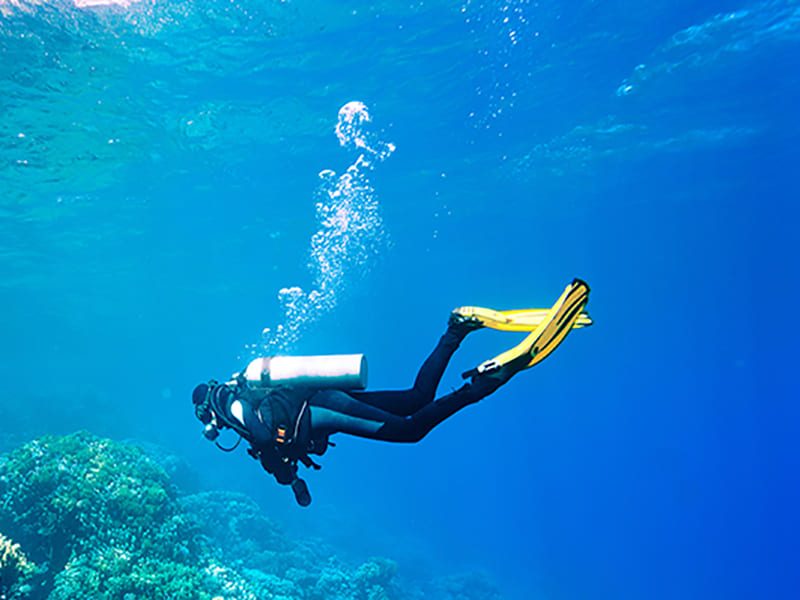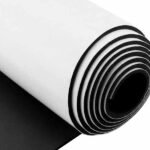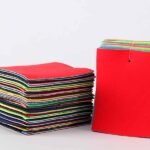If you’re new to wetsuits or looking for the perfect thickness for cooler waters, you’ve probably come across the term “4/3 wetsuit.” But what exactly does it mean? Understanding this specific type of wetsuit can help you choose the best option for surfing, diving, or other water activities. In this article, we’ll delve into what makes a 4/3 wetsuit unique, how it’s constructed, the conditions it’s best suited for, and how it compares to other thicknesses. By the end, you’ll have a clear picture of whether a 4/3 wetsuit is the right choice for your water adventures.
What Is a 4/3 Wetsuit?
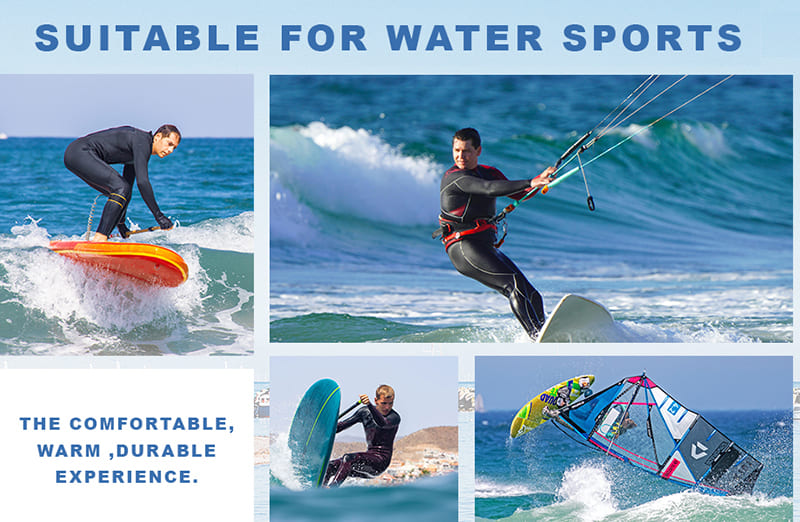
A 4/3 wetsuit is defined by the thickness of its neoprene panels. The first number, “4,” refers to the thickness (in millimeters) of the neoprene around the torso, while the second number, “3,” refers to the thickness of neoprene used in the arms and legs. This arrangement helps maintain warmth in the core area, where it’s needed most, while providing greater flexibility for limbs to enhance movement.
The primary purpose of a wetsuit is to trap a thin layer of water between the suit and the skin. Your body heats this water, creating an insulating barrier that keeps you warm in cooler conditions. The thicker the neoprene, the more effective it is at retaining heat. In a 4/3 wetsuit, the thicker torso material helps protect your core from heat loss, while the thinner material in the arms and legs allows for freer motion, making it easier to paddle, swim, or dive.
What Materials Are Typically Used in 4/3 Wetsuits?
4/3 wetsuits are typically made from neoprene, a synthetic rubber material known for its flexibility, durability, and excellent thermal properties. However, not all neoprene is created equal. Many modern wetsuits use advanced types of neoprene to improve performance, comfort, and environmental friendliness.
Common Neoprene Types:
- Standard Neoprene: This is the most widely used material in wetsuits and is known for its affordability, durability, and solid thermal insulation. While it’s effective, it can be less flexible than other types.
- Limestone-Based Neoprene: A premium alternative to traditional petroleum-based neoprene. Limestone-based neoprene is lighter, more flexible, and has a lower environmental impact. Many high-end wetsuits use this material for improved comfort and performance.
- Superstretch Neoprene: Designed for maximum flexibility, this type of neoprene allows for a more natural range of motion. It’s softer and more comfortable, making it ideal for wetsuits that need to balance warmth and movement.
In addition to the main neoprene panels, 4/3 wetsuits often feature inner linings made of fleece or other thermal materials. These linings improve insulation and comfort by wicking moisture away from the skin and retaining body heat. High-quality wetsuits also use advanced seam constructions—such as glued and blind-stitched seams or taped seams—to reduce water entry and improve durability.
Material and Construction at a Glance
| Material Type | Key Characteristics |
|---|---|
| Standard Neoprene | Cost-effective, durable, good insulation |
| Limestone Neoprene | Lightweight, eco-friendly, higher flexibility |
| Superstretch Neoprene | Extremely flexible, comfortable, premium performance |
| Thermal Linings | Improved warmth, moisture wicking |
| Advanced Seam Seals | Better water resistance, enhanced durability |
Is a 4/3 Wetsuit Warm Enough?
A 4/3 wetsuit provides ample warmth for water temperatures ranging from approximately 10°C to 15°C (50°F to 59°F). For many surfers, this makes it a go-to option for early spring, late autumn, and cooler summer days. It’s also suitable for temperate regions that rarely see extreme cold but still require extra insulation.
That said, the warmth of a wetsuit is influenced by more than just thickness. Factors such as seam construction, inner linings, and overall fit play a significant role in how well the suit retains heat. If the suit fits snugly, it minimizes water flushing (the process of cold water entering and warm water exiting the suit), helping you stay warm longer. In addition, some 4/3 wetsuits are equipped with quick-dry linings or advanced seam taping, further enhancing their ability to keep you comfortable in cooler conditions.
Which Conditions Are 4/3 Wetsuits Best Suited For?
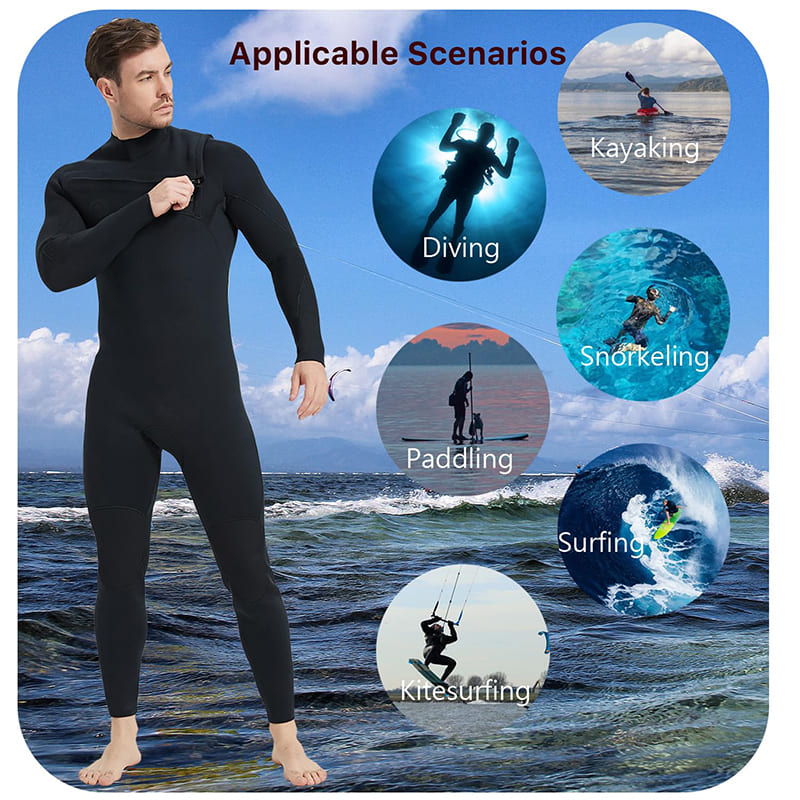
4/3 wetsuits are incredibly versatile, making them a popular choice for a wide range of activities and environments. Their intermediate thickness strikes a balance between warmth and flexibility, allowing them to be used in a variety of water temperatures and weather conditions.
Common Use Cases:
- Surfing in Cooler Waters: A 4/3 wetsuit provides the extra insulation needed for early spring or late autumn swells, when water temperatures are too chilly for a thinner suit.
- Diving in Temperate Seas: Divers often choose 4/3 wetsuits when exploring moderate depths in temperate regions. The suit keeps them warm while still allowing for easy movement.
- Stand-Up Paddleboarding and Kayaking: These activities require a wetsuit that offers both warmth and freedom of movement. The 4/3 design is flexible enough for paddling yet warm enough for long sessions on the water.
- Kiteboarding and Windsurfing: For activities that involve wind exposure, a 4/3 wetsuit helps maintain body heat, ensuring you stay comfortable even on breezy days.
By choosing a 4/3 wetsuit, you’re getting a suit that’s warm enough for cooler conditions without being as restrictive as thicker options. It’s an excellent middle ground that works well for many water sports enthusiasts.
Understanding Wetsuit Thickness: 4/3 vs 3/2 vs 0.5mm
Comparing Thickness Levels:
- 0.5mm Wetsuits: Extremely thin and lightweight, these are designed for warm waters where minimal insulation is needed. They provide basic UV protection and a slight buffer against cooler breezes but won’t keep you warm in cold water.
- 3/2 Wetsuits: A common choice for slightly cooler waters, these wetsuits have a 3mm torso and 2mm arms and legs. They offer more warmth than a 0.5mm suit while still being lightweight and flexible.
- 4/3 Wetsuits: A step up in insulation, the 4mm torso and 3mm limbs provide excellent warmth for water temperatures around 10°C to 15°C. This makes them ideal for moderate conditions where a 3/2 might be too thin.
- 5/4 Wetsuits: With a thicker 5mm torso and 4mm arms and legs, these suits are designed for cold water conditions. They provide maximum warmth but can feel bulkier and less flexible.
When comparing a 4/3 wetsuit to these other options, it becomes clear that it occupies a sweet spot. It’s not too thick to restrict movement, but it’s warm enough to keep you comfortable in colder waters.
Quick Thickness Reference Table
| Thickness | Warmth Range (°C) | Activities |
|---|---|---|
| 0.5mm | 22°C+ (72°F+) | Tropical diving, light snorkeling |
| 3/2mm | 15-20°C (59-68°F) | Late spring/early autumn surfing, paddleboarding |
| 4/3mm | 10-15°C (50-59°F) | Early spring/late autumn surfing, moderate cold |
| 5/4mm | 5-10°C (41-50°F) | Winter surfing, harsh cold conditions |
What Is the Difference Between 5/4 and 5/4/3 Wetsuits?
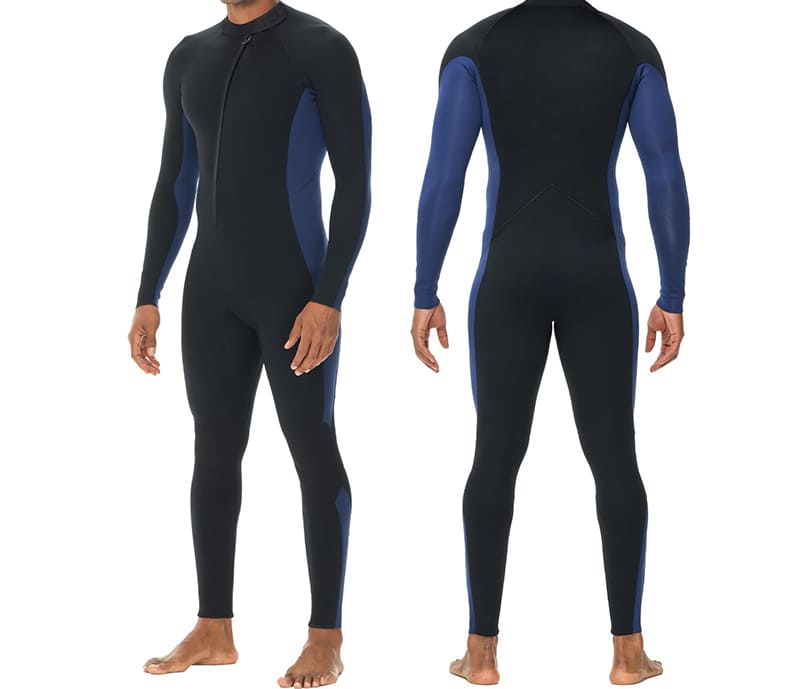
At first glance, the terms “5/4” and “5/4/3” might seem nearly identical, but they refer to different thickness configurations. A 5/4 wetsuit typically has a 5mm torso and 4mm arms and legs. In contrast, a 5/4/3 wetsuit adds a third thickness: a 5mm torso, 4mm upper legs and thighs, and 3mm arms and lower legs. This additional layer of variation can improve flexibility where it matters most.
Key Differences:
- 5/4 Wetsuit: Maximizes warmth, ideal for very cold water conditions. However, it may feel more restrictive in movement.
- 5/4/3 Wetsuit: Provides a balance of warmth and flexibility. By using thinner neoprene in key areas, it offers greater comfort and mobility.
The choice between these two depends on your priorities. If you need maximum warmth, a 5/4 wetsuit may be the better option. If flexibility is more important, a 5/4/3 suit can give you the best of both worlds.
Is a 4/3 Wetsuit Suitable for Beginners or Professionals?
The 4/3 wetsuit is a versatile choice that works well for both beginners and seasoned professionals. For beginners, the combination of warmth and flexibility makes it easier to stay comfortable and focused while learning. The suit provides sufficient insulation for longer sessions in cooler water, helping beginners build confidence without the distraction of feeling cold.
For professionals, the 4/3 wetsuit offers reliable performance in moderate conditions. It allows them to maintain a high level of mobility while staying warm enough to perform at their best. Whether you’re catching your first waves or pushing your limits on a chilly day, a 4/3 wetsuit is a dependable choice.
What Are the Benefits of Customizing a 4/3 Wetsuit?
Customizing a 4/3 wetsuit can elevate your experience. With a tailored fit, you’ll enjoy improved comfort, better thermal efficiency, and a more professional look. Adding personal or brand logos can also enhance your identity on the water. Companies like Szoneier offer extensive customization options, allowing you to select the perfect materials, colors, and thickness variations to match your needs.
Benefits of Customization:
- Perfect Fit: Reduces water flushing and maximizes insulation.
- Unique Branding: Showcases your logo or design for a professional appearance.
- Tailored Features: Choose the exact thickness and materials you prefer.
- Eco-Friendly Options: Opt for sustainable materials to appeal to environmentally conscious customers.
Conclusion
A 4/3 wetsuit is an excellent choice for a wide range of water activities and conditions. Its balance of warmth, flexibility, and durability makes it a versatile option for both beginners and professionals. If you’re looking for a wetsuit that can handle cooler waters without sacrificing mobility, the 4/3 is a reliable pick. By customizing your wetsuit with Szoneier, you can further enhance its fit, style, and performance, ensuring you get the most out of every session on the water.

